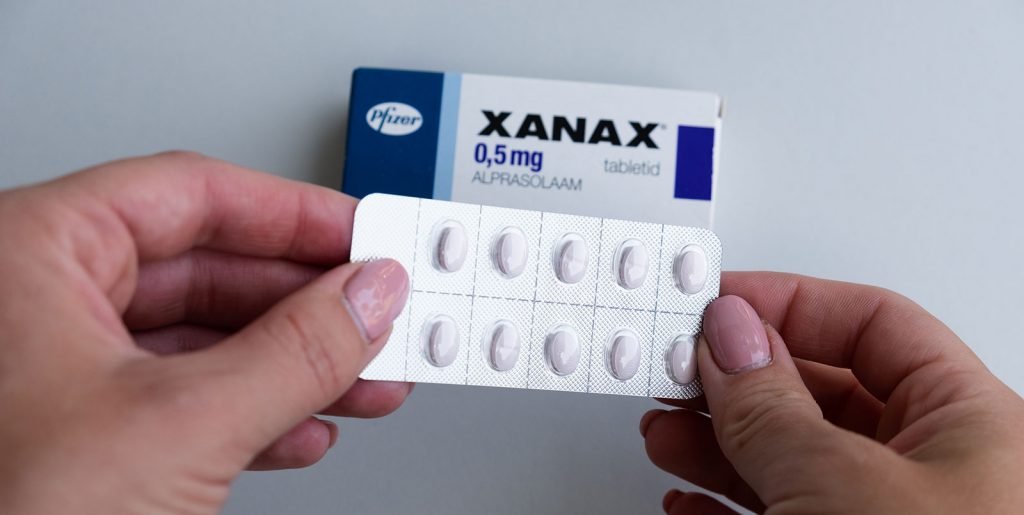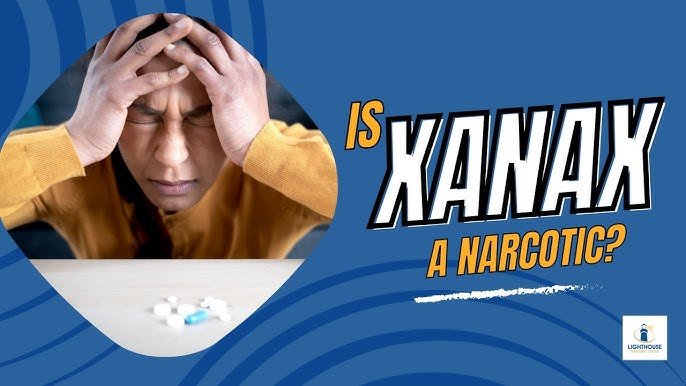
A simple answer to the question Is Xanax a Narcotic? is No. While Xanax is not a narcotic, it is a powerful benzodiazepine with its own set of risks and benefits. Understanding its classification and how it differs from narcotics is crucial for safe and responsible use. When it comes to prescription medications like Xanax, there’s often confusion about their classification. One common question is: Is Xanax a narcotic? While it is a controlled substance, Xanax does not fall under the category of narcotics. Instead, it belongs to a group of drugs known as benzodiazepines.
This article will explore what Xanax is, how it works, why it’s often mistaken for a narcotic, and its proper classification. We’ll also discuss its uses, risks, and the importance of responsible usage.
By the end, you’ll have a clear understanding of Xanax’s role in medical treatment and why it’s essential to differentiate it from narcotics like opioids.
What is Xanax?
Xanax is the brand name for Alprazolam, a prescription medication primarily used to treat anxiety disorders and panic disorders. It is one of the most commonly prescribed drugs in the United States, known for its fast-acting effects and ability to calm the central nervous system (CNS).
How Does Xanax Work?
Xanax belongs to a class of drugs called benzodiazepines. These medications work by enhancing the activity of gamma-aminobutyric acid (GABA), a neurotransmitter in the brain. GABA reduces the activity of neurons in the brain, leading to a calming and sedative effect.
What is a Narcotic?
To understand why Xanax is not classified as a narcotic, it’s essential to define what a narcotic is.
Narcotics originally referred to substances that induce sleep or numbness. In modern medicine and law enforcement, the term is often used to describe opioids, which are drugs derived from the opium poppy or synthetically produced to mimic its effects.
Examples of narcotics include:
- Morphine
- Heroin
- Oxycodone
- Hydrocodone
- Fentanyl
Narcotics are primarily used for pain relief and are known for their high potential for addiction and abuse.
Is Xanax a Narcotic?
The short answer is no, Xanax is not a narcotic.
Xanax’s Classification
Xanax is classified as a benzodiazepine, not an opioid or narcotic. Benzodiazepines and narcotics have different mechanisms of action, uses, and effects on the body.
- Benzodiazepines (like Xanax): Primarily used for anxiety, panic disorders, and sometimes insomnia. They act on the GABA receptors to produce calming effects.
- Narcotics (Opioids): Used to manage moderate to severe pain. They bind to opioid receptors in the brain to block pain signals and produce euphoria.

Why is Xanax Often Confused with Narcotics?
There are a few reasons why Xanax is mistakenly thought to be a narcotic:
- Both Are Controlled Substances
Xanax and narcotics are both classified as controlled substances under the Controlled Substances Act (CSA) in the United States. Xanax is a Schedule IV drug, indicating a lower potential for abuse and dependence compared to narcotics like oxycodone, which are Schedule II drugs. - Potential for Abuse
While Xanax is not a narcotic, it does have a high potential for abuse and dependence, similar to narcotics. Misuse of Xanax can lead to addiction, withdrawal symptoms, and dangerous side effects, making it comparable to narcotics in terms of risk. - Similar Side Effects
Both Xanax and narcotics can cause drowsiness, dizziness, and respiratory depression when taken in high doses. These overlapping side effects may lead to confusion about their classification.
Uses of Xanax vs. Narcotics
Xanax Uses
Xanax is primarily prescribed for:
- Generalized Anxiety Disorder (GAD): Reduces excessive worry and nervousness.
- Panic Disorder: Helps prevent or manage sudden episodes of intense fear.
- Short-Term Anxiety Relief: Often used in specific, situational cases like fear of flying or public speaking.
Narcotic Uses
Narcotics are used for:
- Pain Management: Treating acute or chronic pain, especially post-surgery or for cancer-related pain.
- Cough Suppression: Certain opioids like codeine are used in cough syrups.
- Severe Diarrhea: Medications like loperamide are opioid-based treatments for diarrhea.
Side Effects: Xanax vs. Narcotics
Common Side Effects of Xanax
- Drowsiness
- Fatigue
- Dizziness
- Memory impairment
- Depression
Common Side Effects of Narcotics
- Nausea
- Constipation
- Euphoria
- Slowed breathing
- Drowsiness
While there is some overlap in side effects, narcotics are more likely to cause euphoria and respiratory depression, which can be life-threatening.

The Risks of Xanax Abuse
Although Xanax is not a narcotic, it carries its own risks of abuse and addiction. Prolonged or improper use of Xanax can lead to physical dependence, withdrawal symptoms, and overdose.
Signs of Xanax Abuse
- Taking higher doses than prescribed.
- Mixing Xanax with alcohol or other drugs.
- Craving the drug or experiencing withdrawal symptoms when not using it.
- Using Xanax recreationally to feel “high.”
Dangers of Xanax Overdose
Xanax overdose can cause:
- Extreme drowsiness
- Slurred speech
- Loss of coordination
- Slow or shallow breathing
- Coma or death
Xanax Withdrawal Symptoms
Stopping Xanax abruptly can lead to withdrawal symptoms, including:
- Anxiety or panic attacks
- Insomnia
- Seizures
- Tremors
- Sweating
If you are prescribed Xanax, always consult your healthcare provider before discontinuing its use.
Xanax vs. Narcotics: A Comparison Table
| Category | Xanax (Benzodiazepine) | Narcotics (Opioids) |
|---|---|---|
| Primary Use | Anxiety and panic relief | Pain relief |
| Mechanism | Enhances GABA activity | Binds to opioid receptors |
| Abuse Potential | Moderate | High |
| Side Effects | Drowsiness, dizziness | Euphoria, respiratory depression |

Conclusion
If you are prescribed Xanax, always follow your doctor’s instructions and avoid misuse. Proper understanding and responsible handling of this medication can ensure its benefits while minimizing risks.
Would you like further adjustments, or should I expand on specific sections?
1. Is Xanax considered a controlled substance?
Yes, Xanax is a controlled substance. It is classified as a Schedule IV drug, indicating a lower potential for abuse compared to Schedule II drugs like narcotics.
2. Can you mix Xanax with pain medications?
Mixing Xanax with narcotics or other pain medications can be dangerous and may increase the risk of respiratory depression, sedation, and overdose. Always consult your doctor before combining medications.
3. How is Xanax different from opioids?
Xanax is a benzodiazepine used for anxiety, while opioids are narcotics used for pain relief. They have different mechanisms, uses, and risk profiles, though both carry a potential for abuse.
